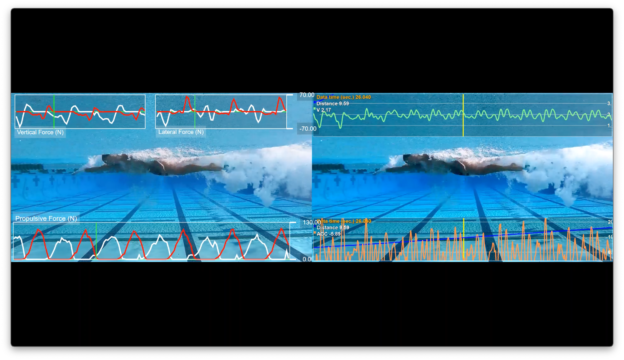Freestyle Pulling Motion: Five Common Problems
We often speak of the importance of the kick in all four strokes. The amount of propulsion generated by the swimmer’s kick is the biggest single difference between great and not-so-great swimmers. That does not mean that swimmers don’t make mistakes in their pulling. They often do.
Contrary to popular belief, most of the propulsion generated by the pull comes from the hand, not the forearm. Almost none of it comes from the upper arm. While the surface area of the forearm is greater than that of the hand, its shape is roundish. The hand is a relatively flat shape. Because of the flatter shape of the hand, and the fact that it is moving backward faster than the forearm, it leads to much greater propulsion than is generated with the forearm.
Still not convinced? Try swimming freestyle with your fists closed. Perhaps that will convince you.
Coaches often speak about a swimmer’s ability to hold water with their pull. What they really mean is that the swimmer is able to generate lots of propulsion (force backwards) with their pulling hands. Here are five common technique errors of the pulling motion which result in swimmers not holding water:
- The out sweep
Usually occurring at the beginning of the pulling motion, the out-sweeping hand results in less propulsion and more frontal drag. Further, an out sweep of the hand nearly always results in a subsequent in sweep of the same hand. That is the S-shaped pulling motion that was once taught decades ago.
- The in sweep
The in sweep of the hand usually occurs during the middle of the pull and results in the hand being located far under the swimmer’s body. It often occurs with the hand opposite the breathing side. To get under the swimmer’s body, the hand must turn and move inward, which means less force pressing backward.
- The hand lift
As the swimmer’s hand travels backward during the pull, in order to continue pressing backward, the swimmer’s elbow must elevate in the water. Along with lifting the elbow, some swimmers will also lift the hand once it passes the shoulder, losing their grip or hold on the water. Although the swimmer may re-grip the water moments later, it is too late. Propulsion is lost. I often compare this error in pulling technique with hanging from a chin up bar with one arm. If you feel your hand slipping and try to re-grip, you will find yourself on the ground. As the elbow elevates during the pull, swimmers must keep pressing backward with the hand.
- The press up
At the end of the pull, the wrist must dorsiflex or extend in order for the swimmer to keep pressing backward. Some swimmers keep the wrist stiff and the hand in alignment with the forearm at the end of the pull. As a result, there is an upward pressing of the hand. Not only will the swimmer lose propulsion at the end of the pull using this technique, but the force of the hand moving upward will also push the body lower in the water, increasing drag. Neither result is desirable.
- The early release
How much a swimmer should press out the back with the extended wrist and hand is controversial. In hip-driven freestyle technique, it is almost essential to do so in order to maximize the propulsion from each hand. In sprinting, however, an earlier release of the hand may be necessary in order to maximize the stroke rate. While the sprinter may be giving up some propulsion at the end of the pull from an earlier hand release, he or she is gaining by increasing the RPM.
Soon we will be releasing a video series on these five common pulling technique errors and how much each one affects a swimmer’s speed and propulsion. For the first time in history, we are able to combine two great technologies in one study. Using Trainesence technology (Finland) combined with Velocity Meter Technology (AP Labs Italy), synchronized to video, we are able to measure the force of the swimmer’s pulling hand in all directions, along with the speed, acceleration and deceleration of the swimmer during the exact same swim. Having the two technologies together is groundbreaking.
Thanks go to elite freestyler Artyom Machekin for providing the swims for this fascinating series. We hope you will enjoy it.
Yours in Swimming,
Gary Sr.

